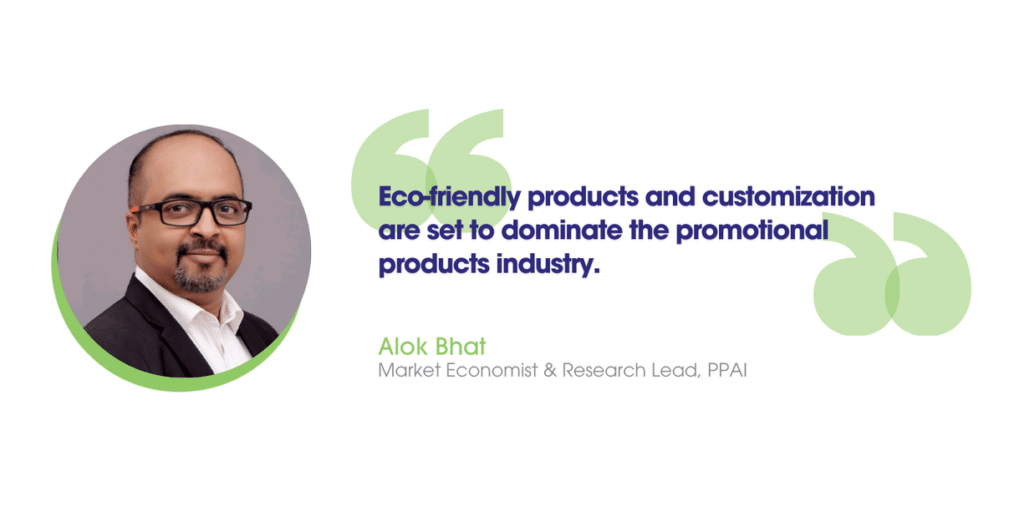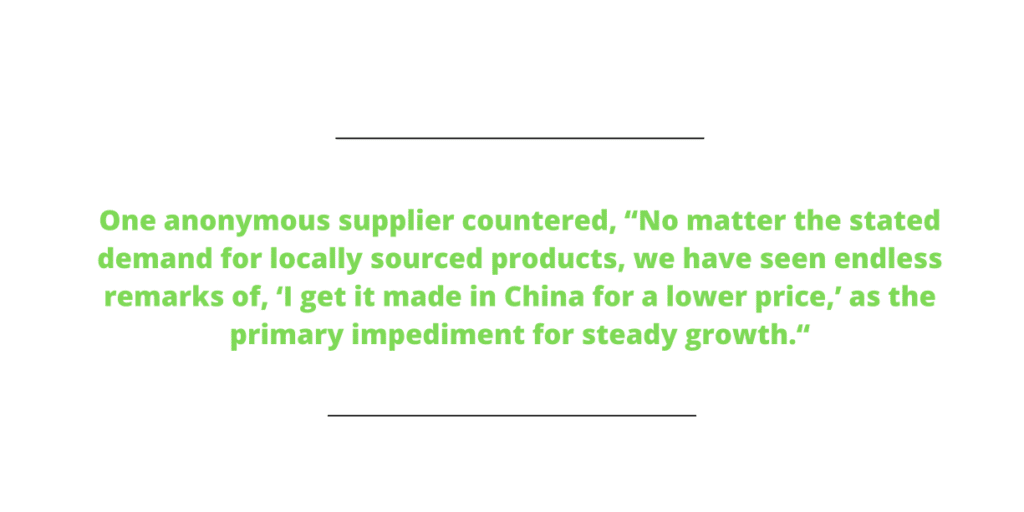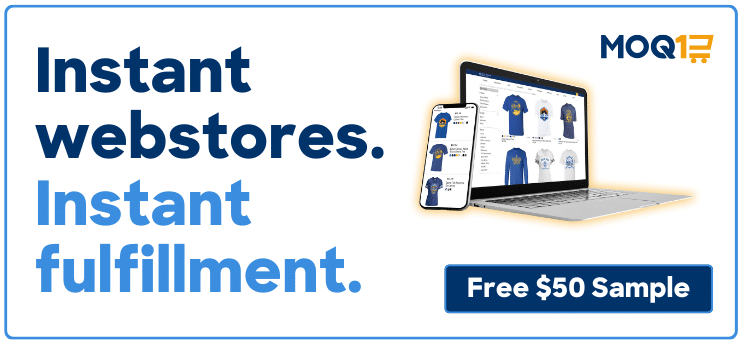The promotional products industry is sustained by the familiar utility of tried-and-true products, but the introduction of new, innovative goods is what propels it to new heights.
New products are a snapshot of where the promo industry is going and what consumers are looking for. To get a better grasp of these trends, PPAI Research surveyed PPAI 100 distributors and suppliers, soliciting their insights on the trends, challenges and marketing approaches of sourcing new products.
Responses to the survey varied among suppliers and distributors, but two clear trends emerged: eco-friendly products and customization are cornerstones of new offerings in the industry currently.
“Eco-friendly products and customization are set to dominate the promotional products industry,” says Alok Bhat, market economist and research lead at PPAI.

Below is a breakdown of the findings of PPAI Research’s survey on new products.
Sourcing Challenges
Nearly half (49%) of PPAI 100 distributors reported limited availability as their biggest barrier in sourcing new products, followed by supplier reliability (46%), high costs (28%), long lead times (26%) and regulatory compliance (23%).
- About 13% of distributors mentioned additional challenges, including the lack of knowledge about new products and the lack of resources to conduct proper research to find them.
A couple of anonymous distributors pointed to challenges in fighting promo’s “brandfill” reputation, citing “greenwashing” and “lack of objective data regarding sustainable products” as obstacles in acquiring new and trending products.
In suppliers’ case, a few different challenges were cited at similar levels when it came to sourcing new products, suggesting that the diversity of obstacles need to be solved on a case-by-case basis. About 33% of PPAI 100 suppliers struggle with source supplier reliability, proving a need for strong, dependable supplier relationships built on trust.
- Both long lead times (33%) and regulatory compliance (33%) were also top challenges suppliers cited for sourcing new products.
- High costs (30%) were also highlighted as a significant barrier when value-driven solutions cannot be found.
Limited availability (13%) held up some suppliers from sourcing new products, while a few noted that hiring freezes in response to weaker than normal sales could in turn lead to a delay in pursuing plans for new products.
Evolving Consumer Preferences
Sourcing challenges are frustrating the industry’s ability to offer end buyers what want. The survey found that 65% of PPAI 100 distributors and 64% of PPAI 100 supplies noted a significant increase in consumer interest in eco-friendly products and 20% of distributors and 24% of suppliers saw a greater preference for locally sourced products.
Most industry professionals see this as a sign of things to come: 78% of distributors and 73% of suppliers believe that increased demand for eco-friendly products will shape the industry. On the distributor side, 42% predict a higher preference for locally sourced materials as more consumers focus on supporting local economies and reducing carbon footprints, while this belief skews lower (24%) among suppliers.
- These trends reflect growing consumer awareness and preference for sustainable options, pushing suppliers to innovate with environmentally friendly materials and processes.
- One anonymous distributor respondent added that “sustainable packaging is becoming part of the conversation.”
Elizabeth Wimbush, director of sustainability and responsibility at PPAI, says the data indicates the industry’s growing understanding of sustainability.
“We should absolutely celebrate this deepening of our collective knowledge,” Wimbush says. “Local sourcing reduces carbon footprints by cutting transportation needs and allows for more direct support of the economies where we work and live. Despite this interest, challenges like ‘greenwashing’ and lack of objective data persist, underscoring the need for transparency, traceability and accountability. Moving forward, verified data will become crucial to backing up our sustainability claims.”
Still, one anonymous supplier responded, “No matter the stated demand for locally sourced products, we have seen endless remarks of, ‘I get it made in China for a lower price,’ as the primary impediment for steady growth.”

Meanwhile, 46% of distributors and 36% of suppliers see a greater emphasis on customization and personalization. The importance of customization is evident, with 51% of distributors considering it “very important” and another 26% calling it “important.” For suppliers, it is 77% who deem it “very important,” accepting that it is crucial for them to create products that are customizable.
The numbers bear out that suppliers are leading the way with customization, offering it in their products at a rate higher than distributors.
- More than a quarter (29%) currently offer customization options for 76%-100% of their products, while a whopping 82% of suppliers offer customization options for a large majority of their products, all highlighting a strong market trend towards personalized solutions.
“With 82.4% of suppliers heavily focused on customization and 76.5% rating it as crucial, the industry’s future lies in personalized solutions to meet customer demands and stay ahead of the competition,” Bhat says.
More than three quarters (78%) of distributors also reported that consumers are placing a heightened emphasis on product quality over quantity, indicating that consumers value durability and premium experiences. This is followed by increased demand for tech-oriented products (37%) and health and wellness products (29%).
About 17% anticipate additional trends, such as:
- continued demand for retail-branded products
- lower quantities with more tech-enabled solutions
- print on demand with a one-piece minimum
- supply chain transparency and social responsibility
- the importance of lead times, price and ease of ordering.
Quality over quantity was cited by only 42% of suppliers and only 9% claimed to see an increased demand for tech-oriented products.
Key Marketing Approaches
An overwhelming 85% of PPAI 100 distributors utilize direct sales strategies to market their new product offerings, emphasizing personal interactions and tailored pitches.
Meanwhile, more than three quarters of distributors (78%) rely on email marketing, followed by social media (75%), trade shows and events (53%) and digital advertising (40%). Roughly 8% mentioned additional methods, such as using catalogs, client engagement initiatives and hosting customer conferences.
“Direct sales and email marketing lead the way for distributors, with social media and trade shows also playing key roles,” Bhat says. “A multi-channel approach is essential for maximizing reach and engagement in today’s market.”
For suppliers, the way to market new products is tried and true: 97% claimed to utilize trade shows and events as a marketing approach.
The PPAI 100 suppliers were also aligned in their use of multiple tools in marketing new products they want the world to know about. A large majority (88%) cited email marketing and nearly as many (85%) leverage social media. Digital advertising (68%) and direct sales (64%) were also proven to be consistent marketing approaches for suppliers.


